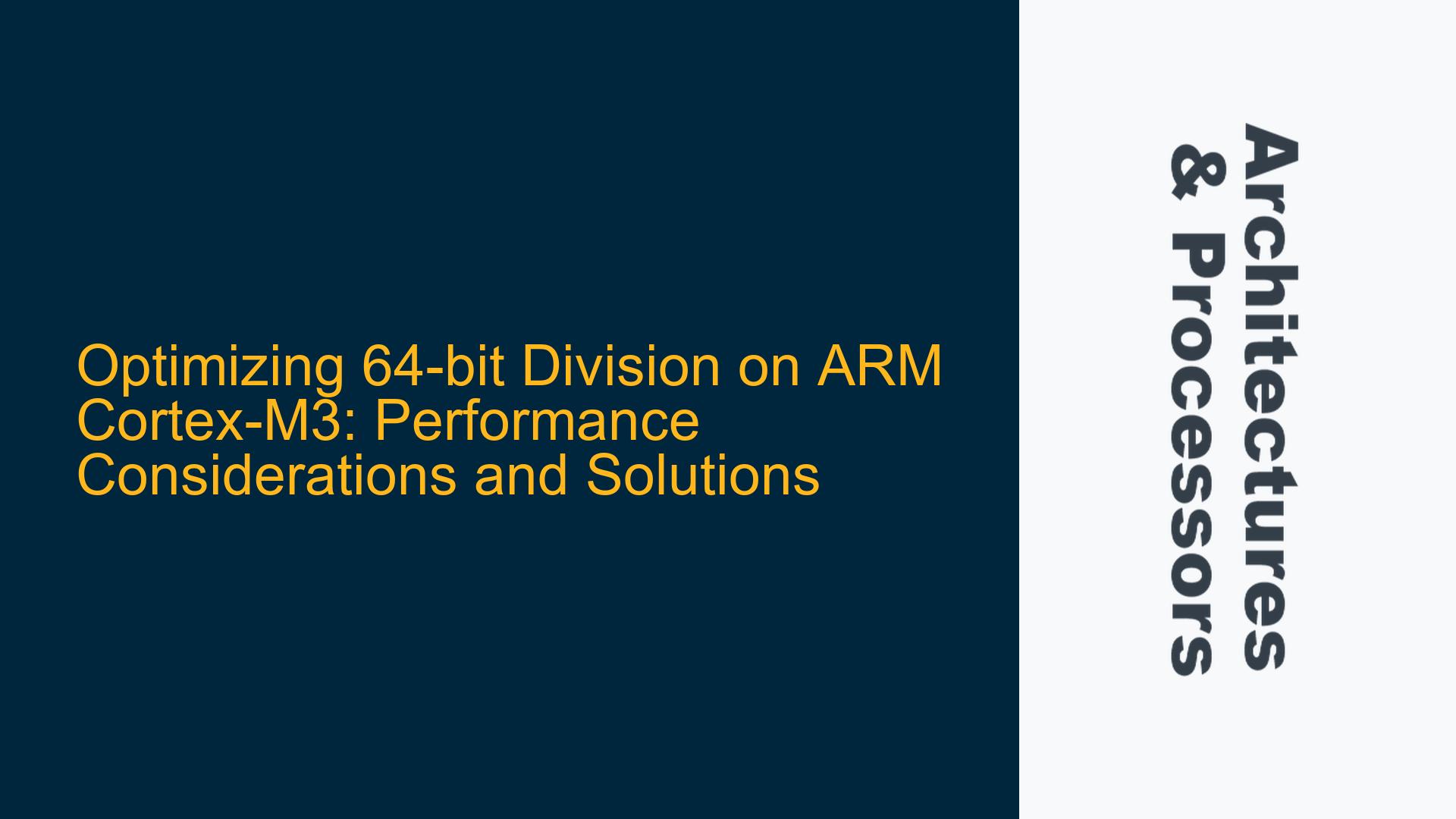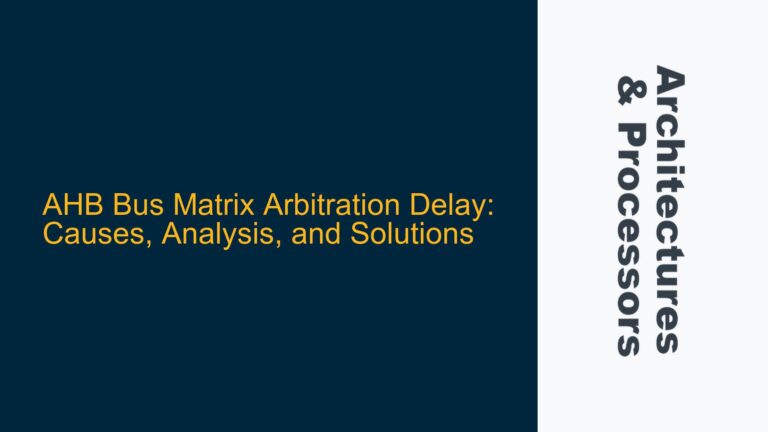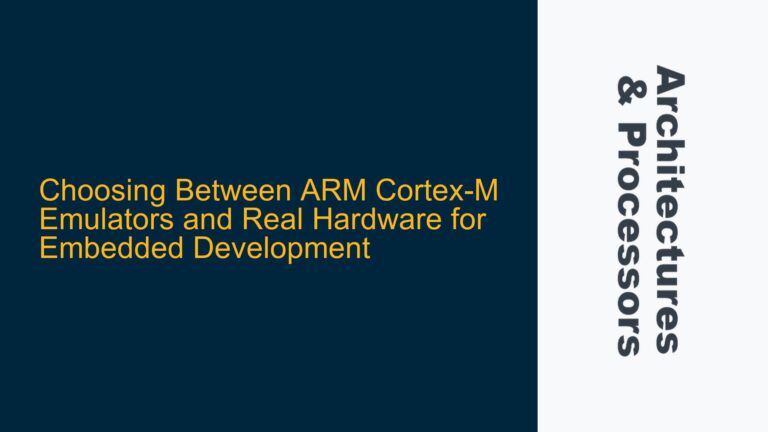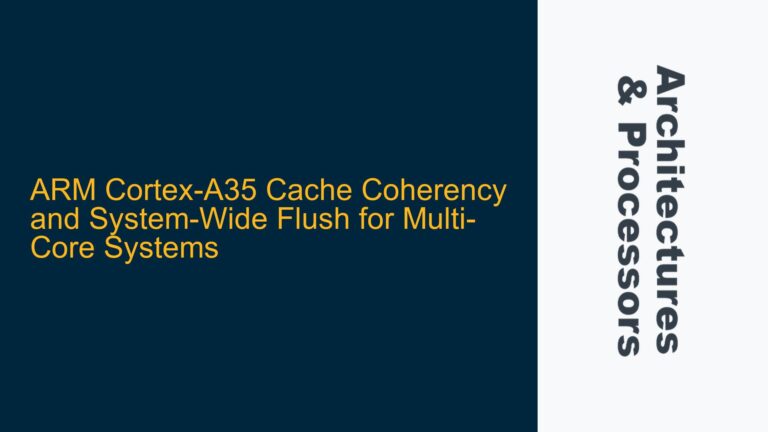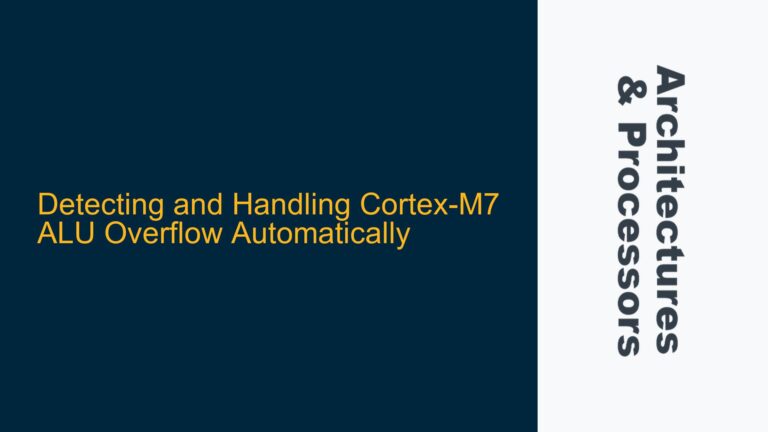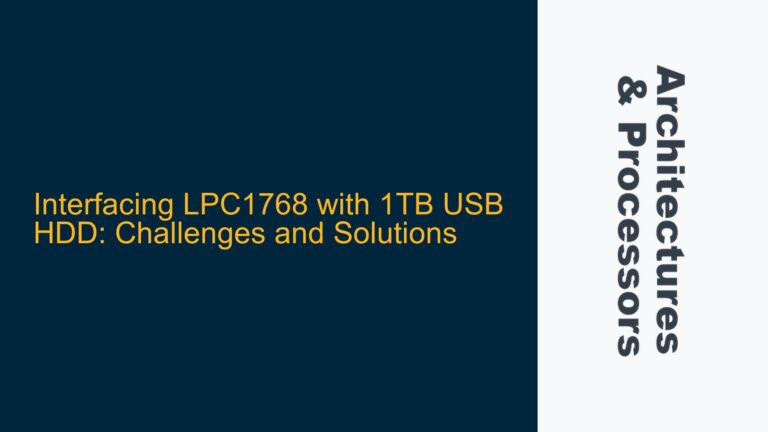ARM Cortex-M3 64-bit Division Performance Challenges
The ARM Cortex-M3 is a widely used 32-bit microcontroller core that excels in embedded systems due to its balance of performance, power efficiency, and cost-effectiveness. However, one of its limitations is the lack of native support for 64-bit arithmetic operations, particularly division. When performing 64-bit division on the Cortex-M3, developers often encounter performance bottlenecks due to the core’s 32-bit architecture. This issue arises because the Cortex-M3 does not have a dedicated 64-bit divider in its instruction set, and such operations must be implemented using software routines or compiler-generated code.
The primary challenge lies in the fact that 64-bit division on a 32-bit processor like the Cortex-M3 requires multiple steps, including handling the high and low parts of the 64-bit operands, managing carry-over values, and ensuring correct alignment of intermediate results. These steps introduce significant overhead, leading to increased execution cycles and reduced performance. Additionally, the compiler-generated code for 64-bit division, while functional, may not always be optimized for specific use cases, such as real-time systems where deterministic performance is critical.
To address these challenges, developers must understand the underlying mechanisms of 64-bit division on the Cortex-M3, including the role of the compiler, the limitations of the hardware, and potential optimizations that can be applied. This guide will explore the possible causes of performance bottlenecks and provide detailed troubleshooting steps and solutions to optimize 64-bit division on the Cortex-M3.
Compiler-Generated Code and Hardware Limitations
The performance of 64-bit division on the Cortex-M3 is heavily influenced by the quality of the compiler-generated code and the inherent limitations of the hardware. Most modern C compilers, such as ARM Compiler, GCC, and Clang, provide built-in support for 64-bit integer types (int64_t and uint64_t). When a developer uses these types in their code, the compiler automatically generates the necessary assembly instructions to perform 64-bit arithmetic operations, including division.
However, the efficiency of the compiler-generated code depends on several factors. First, the Cortex-M3’s instruction set does not include native 64-bit division instructions. Instead, the compiler must emulate 64-bit division using a sequence of 32-bit operations. This emulation typically involves multiple iterations of shift, subtract, and compare operations, which can be computationally expensive. The number of iterations required depends on the magnitude of the operands, leading to variable execution times that may not be suitable for real-time applications.
Second, the compiler’s optimization strategies may not always align with the specific requirements of the application. For example, the compiler may prioritize code size over execution speed, or it may use generic algorithms that are not tailored to the Cortex-M3’s architecture. While these strategies are generally effective for a wide range of use cases, they may not provide the best performance for specialized applications.
Finally, the Cortex-M3’s lack of hardware support for 64-bit division means that the processor must rely entirely on software routines to perform these operations. This reliance introduces additional overhead, as the processor must execute a larger number of instructions to achieve the same result as a single 64-bit division instruction on a 64-bit processor. This overhead can be particularly problematic in applications where performance is critical, such as digital signal processing or control systems.
Implementing Custom 64-bit Division Routines and Optimizations
To overcome the performance limitations of compiler-generated 64-bit division on the Cortex-M3, developers can implement custom division routines tailored to their specific requirements. These routines can be written in assembly language to take full advantage of the Cortex-M3’s instruction set and optimize the division process for speed, size, or a balance of both.
One approach to optimizing 64-bit division is to use a combination of shift and subtract operations to perform the division iteratively. This method, known as the "restoring division algorithm," involves aligning the divisor with the most significant bits of the dividend, subtracting the divisor from the dividend if it is smaller, and shifting the result to process the next bit. By carefully managing the carry-over values and minimizing the number of iterations, developers can significantly reduce the execution time of the division operation.
Another optimization technique is to use lookup tables or precomputed values to simplify the division process. For example, if the divisor is known to be a constant or falls within a specific range, the division can be reduced to a series of multiplications and additions, which are generally faster than division on the Cortex-M3. This approach is particularly effective in applications where the divisor is fixed or varies within a limited set of values.
In addition to algorithmic optimizations, developers can also leverage the Cortex-M3’s hardware features to improve the performance of 64-bit division. For example, the processor’s single-cycle multiply instruction can be used to accelerate certain steps of the division process, such as computing intermediate products or aligning operands. Similarly, the Cortex-M3’s barrel shifter can be used to efficiently shift operands by multiple bits in a single instruction, reducing the number of cycles required for alignment and normalization.
When implementing custom 64-bit division routines, it is important to thoroughly test the code to ensure correctness and performance. This testing should include a variety of test cases, including edge cases such as division by zero, overflow, and underflow. Additionally, developers should profile the code to measure its execution time and compare it to the compiler-generated version to verify that the optimizations provide the desired performance improvements.
In conclusion, optimizing 64-bit division on the ARM Cortex-M3 requires a deep understanding of the processor’s architecture, the limitations of compiler-generated code, and the potential for custom optimizations. By carefully analyzing the performance bottlenecks and implementing tailored solutions, developers can achieve significant improvements in the efficiency of 64-bit division operations, enabling the Cortex-M3 to meet the demands of even the most performance-critical applications.
